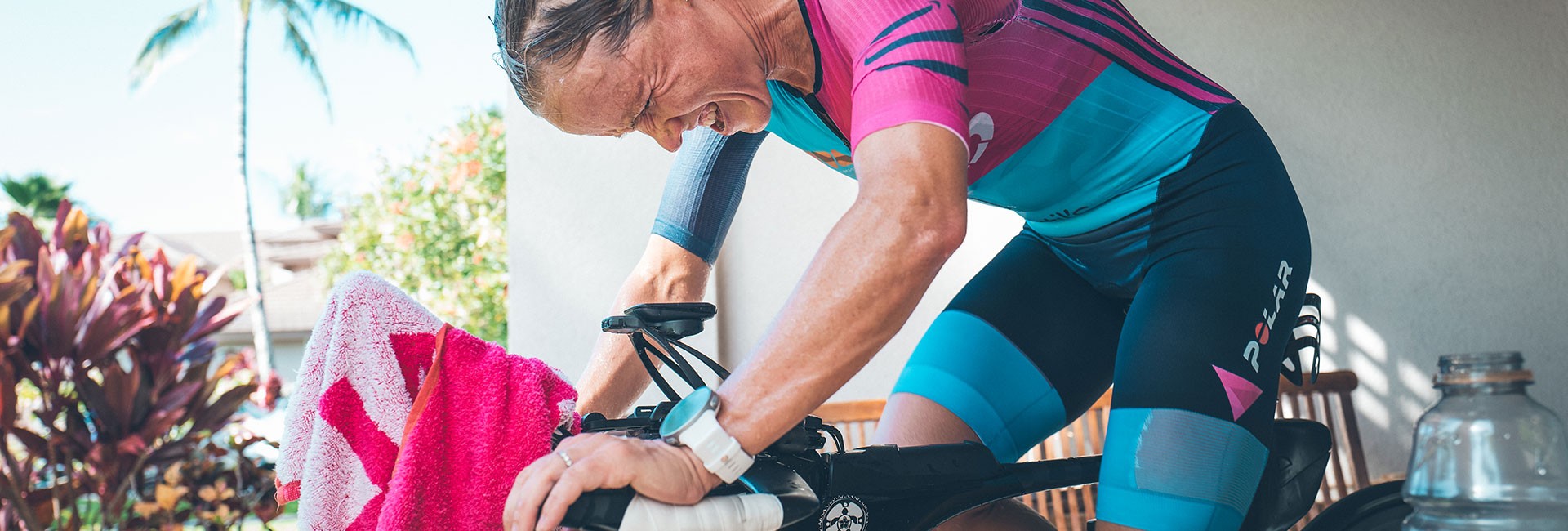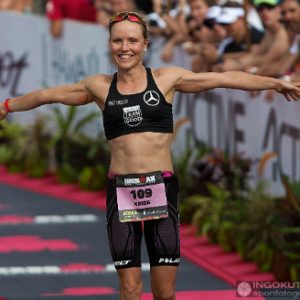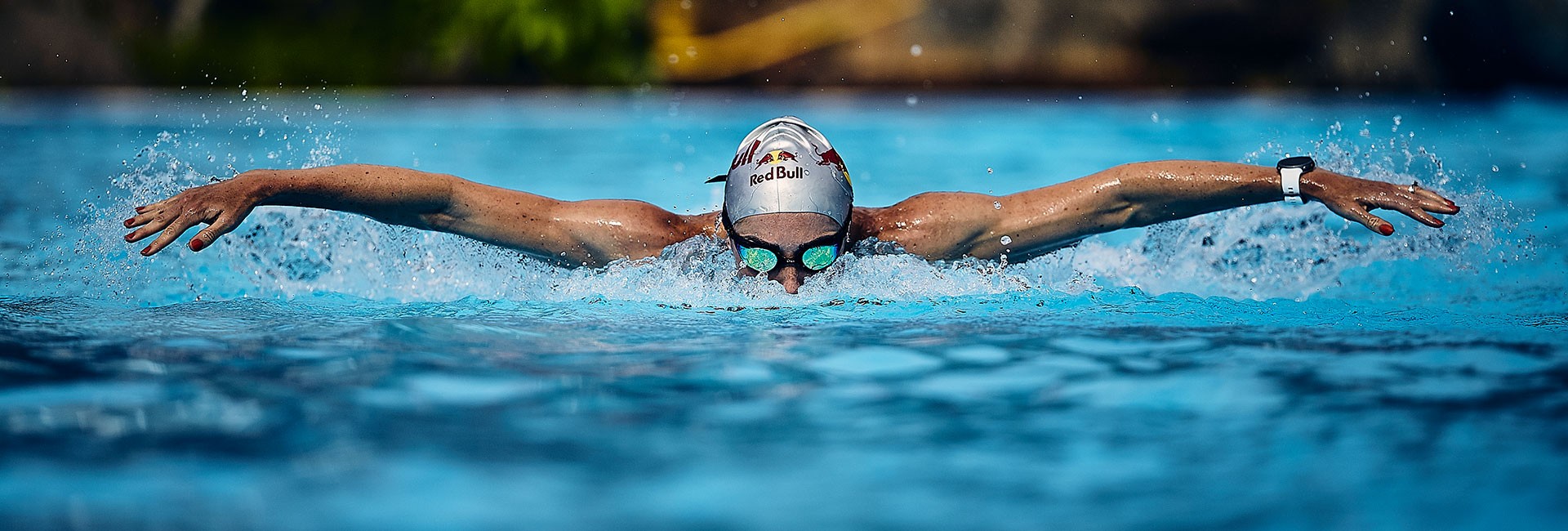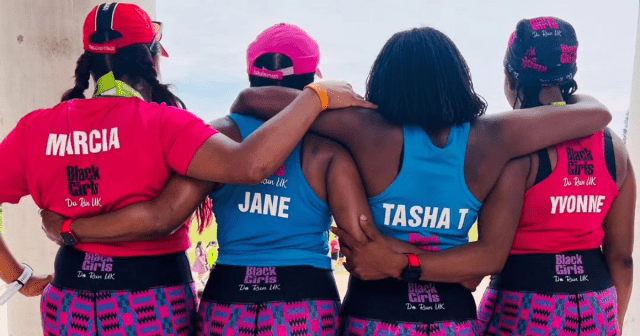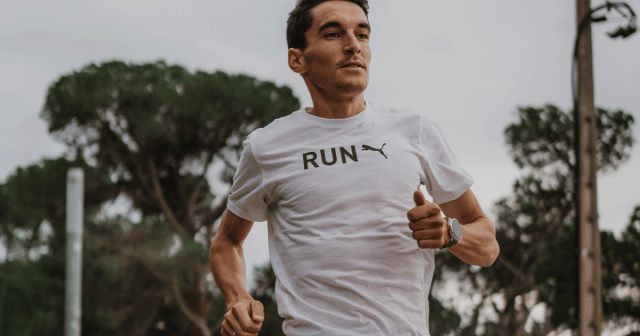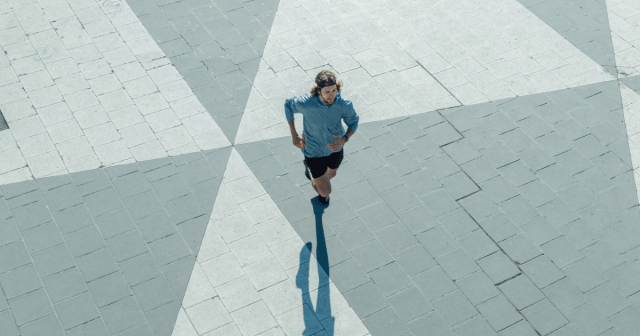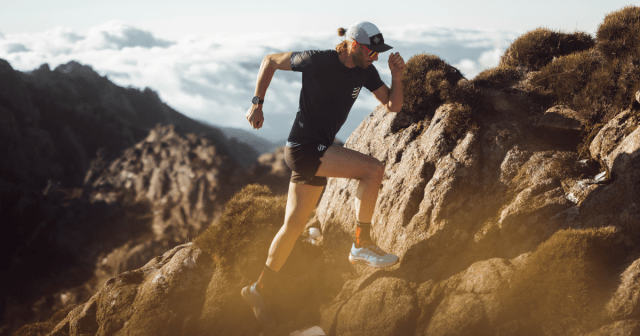Ask any athlete, and they’ll tell you there’s nothing more frustrating than being sidelined with an injury.
It’s an interesting blend of obvious physical limitations (and sometimes pain), and unexpected mental stress of feeling like your fitness is wasting away or you’re being out-trained by a competitor. It’s a tough situation that – while you’re in it –can feel like an eternity.
Injury is an unfortunate aspect of sports most athletes have to deal with at some point in their career. It doesn’t matter if it’s a nagging overuse injury or a more serious issue that requires reconstructive surgery, returning to form and feeling confident is challenging.
Luckily, taking preventative measures can help reduce your risk of getting injured while running.
Kaisa Sali knows this better than most. As a professional triathlete performing at the sport’s highest level, she has experienced her share of running-related injuries. She has nursed her way back from not one, but two serious leg injuries — the first caused by a misplaced step and the second from training too hard.
Kaisa Sali would be the first to tell you: If something doesn’t feel right, it probably isn’t.
This has resulted in her retooling the way she approaches training and injury prevention and caused her to reevaluate her personal boundary between pushing too hard and not pushing hard enough.
Here, Sali shares her views on how and why injuries occur, what her comeback process entailed, and actionable tips on how to prevent running injuries for age-groupers before they happen.
What do you believe caused your leg injuries? Was this preventable?
First of all, it’s important to understand that all injuries are caused by overloading the tissue. There might be some functional or other issues that are part of the process, but the actual injury is always caused by the overload. Therefore, all injuries could, in theory, be avoided by preventing the overload, but that is sometimes easier said than done.
I had one really serious injury that has resulted in a quite difficult surgery and a long period of rehabilitation, and last year I had a stress fracture in my left leg when racing at the IRONMAN World Championship.
The first was caused by stepping into a hole on the ground during an easy jog and twisting the knee, and the second was from training too hard.
But are all the accidents really accidents and how do you really know how hard and how much you can train before you fall?
Sometimes when we evaluate things after injuries have happened, we tend to be somewhat biased to explain things the way we find suitable for our psyche.
Also, most athletes exhibit a somewhat unbalanced movement pattern that can lead to dysfunction of some part of a kinetic chain somewhere in the body, which again has the potential to develop into an injury if not noticed in time.
What did the comeback process entail? Has your approach to training and racing changed?
I started with some time for the body and mind to heal, then used the right kind of rehabilitation depending on the injury. I have been lucky to find some really good physiotherapists and we have worked together for several years.
I do some specific exercises to strengthen the muscles and find the correct movement patterns again, and also sometimes some manual therapy is needed. Of course an injury impacts training, and after you go through this rehabilitation process you do not want to get injured again.
I could say I have become more aware of my limitations, but again this could turn out to be quite a biased assumption. There is also a risk of becoming too sensitive and careful, but since I am trying to become as fit and strong as possible, I need to push my limits as well.
Hindsight is always 20/20, but what have you learned through this process?
I try to keep in mind that doing one particular session is not that important and that it’s more important to stay consistent.
Instead of pushing through one session, I leave it out and focus on recovery and rehabilitation if I feel some tightness or something else that shouldn’t be there. I also believe that strength training has a huge impact on endurance sports.
How does technology help you avoid running injuries?
I gain objective data-based insights from my training that, together with my evaluation of the perceived effort, help me understand how hard and how much I have been training.
I think it’s hugely important to learn to know how something feels, but just going by feeling has also a risk that when you are gaining fitness everything starts to feel much better and this can lead to “over-speeding”.
Just like riding downhill on a bike for a long time, you get easily “speed blind” if you don’t observe the speed on your device.
Are there any key metrics or features that are especially crucial in running injury prevention?
Volume and intensity are important, but intensity is more difficult to evaluate.
Naturally it’s important to follow overall development of training volume, but also the frequency of the running sessions and also the distribution of these within the training regime.
Running power that is now available in the Polar Vantage V gives some indication on this, which is really helpful in evaluating intensity. But since it’s not a direct measure of force but rather obtained through a mathematical model, it’s important to understand how wrist-based Running Power works. This is the case with all derived metrics, like the TRIMP score, TSS, or others in different applications.
How does measuring heart rate affect injury prevention?
As I’ve been using heart rate monitor for so many years, I have a pretty good sense of how my heart rate should behave on any given individual session or period in the training regime.
If the heart rate is something other than what I would expect it to be, this naturally leads to questions on why.
Sometimes it’s an indication of fatigue or some stress that can lead to injury if you just keep pushing.
What tips would you give age-group triathletes in terms of running injury prevention? Are there any signs you can notice before it’s too late?
Too much of anything is bad for you! No matter if it’s training, work, or something else, it’s important to understand the overall load that we are experiencing.
This means you might still feel good and perform great even though you have something bad cooking in your body already.
It’s also key to remember that developing endurance takes time, so “hurry slowly”. It can seem that you can increase your training volume pretty steeply, but it’s quite often that the problems surface with some lag.
It’s smart to slow down a bit if you experience that your outlook on training has changed. For example, if previously it was fun and you were eager to start training, but now you don’t feel like it for some reason.
when considering how to prevent running injuries, are there any exercises that can help?
Strength training and plyometrics are always good, but these should be done the right way and at the right time.
Some coaches are good at incorporating this type of training into your schedule, but sometimes it can be helpful to find a specialist on strength and conditioning. Make sure they understand what impacts swimming, cycling, and running have on your body.
If you liked this post, don’t forget to share so that others can find it, too.
Or give it a thumbs up!
I like this article
Please note that the information provided in the Polar Blog articles cannot replace individual advice from health professionals. Please consult your physician before starting a new fitness program.
